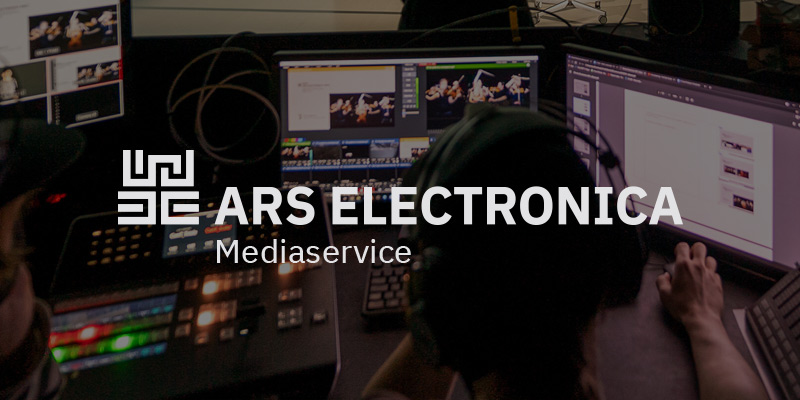press release as pdf
photo album Samurai Museum Berlin
website Ars Electronica Solutions
website Samurai Museum Berlin
press accreditation Ars Electronica Festival
Ars Electronica Blog
(Linz/Berlin, May 11, 2022) Magnificent armor, meticulously crafted sword ornaments, tea utensils, ceramics and paintings, a large Nō theater, an authentic traditional teahouse: last Friday, a new museum opened its doors in Berlin Mitte, bringing the legendary era of the Japanese samurai to life. For more than thirty years, entrepreneur Peter Janssen has been collecting artifacts for this purpose: “By opening my collection in the Samurai Museum Berlin to visitors of all ages and backgrounds, I want to share my enthusiasm for Japanese culture and samurai history across the generations. We see ourselves as a place of living knowledge transfer and as bridge builders — culturally, spatially and temporally.”
Take a trip to the world of the samurai …
Peter Janssen brought the Ars Electronica Solutions team on board for staging and storytelling. “It was both a delightful and challenging task to showcase the people and their culture that once produced all these unique exhibits,” says Michael Mondria, Managing Director of Ars Electronica Solutions. “Visitors should be able to get a glimpse of what life was like in the era of the samurai.”
… as an interactive experience from Ars Electronica Solutions
“Peter Janssen is presenting the largest collection of authentic samurai artifacts outside Japan in Berlin Mitte,” says Michael Mondria, underlining the extent and significance of the new museum. “Therefore, it was important to us to prepare his collection for the widest possible audience.” Discovering and exploring the Samurai Museum should be playful, entertaining and enlightening. Exhibit by exhibit, visitors will be able to sense not only what beliefs and philosophies the legendary samurai adhered to, but also what their everyday lives were probably like. “Our production interweaves the museum’s architecture with light, color and sound,” says Michael Mondria. “Embedded in that, we present the individual objects and tell about the people who created and used them.” There are stations that offer information and others that take a very playful approach and aim for interaction. The museum emphasizes points of contact with our culture and our view of the world today.
Stories about people of the past for people of today
Although a lot of technology is involved in the production, it never takes center stage. “For us, technology is always just a means to an end,” says Michael Mondria. “It helps us tell stories in a way that is meant to touch and inspire people.” Unique physical exhibits that may not be touched can be examined in detail using 3D scans. Multimedia installations show how complex and elaborate the production of sword blades was at that time and illustrate how valuable these weapons were.
Without a doubt, one of the highlights of the museum is an authentic Nō theater that comes to life through projected green-screen footage of two of the most important Nō actresses of our time. “The fact that we were permitted for the first time ever to produce this kind of green-screen film on a renowned stage in Tokyo, Japan, and then to show the footage in Berlin at the Museum makes it clear that Peter Janssen and his team really left no stone unturned in their efforts to make the Samurai Museum something very special,” says Chris Bruckmayr, Head of Products & Events at Ars Electronica Solutions. The museum’s tea house — which is also authentic, of course — will also feature green-screen footage of a traditional Japanese tea ceremony. “In addition, we’ve developed two large interactive multimedia installations that tell the story of the Japanese samurai in the style of a dramaturgical audiovisual narrative and explain the elaborate process of making a sword,” says Michael Mondria. World-historical contexts and developments that took place outside Japan but had a lasting influence on the world of the samurai are also shown. “In many ways, the new Samurai Museum Berlin was a very challenging project, but that made it an incredibly rewarding project for us,” says Michael Mondria. “To anyone coming to Berlin anytime soon, I highly recommend stopping by and immersing yourself in the world of the samurai — it’s guaranteed to be an experience!”
Photo:
Samurai Museum Berlin / photo: Ars Electronica Solutions – MyTrinh Müller-Gardiner / print version
Photo:
Samurai Museum Berlin / photo: Ars Electronica Solutions – MyTrinh Müller-Gardiner / print verion
Photo:
Samurai Museum Berlin / photo: Ars Electronica Solutions – MyTrinh Müller-Gardiner / Printversion
Photo:
Samurai Museum Berlin / photo: Ars Electronica Solutions – MyTrinh Müller-Gardiner / print version
Photo:
Samurai Museum Berlin / photo: Ars Electronica Solutions – MyTrinh Müller-Gardiner / print version


